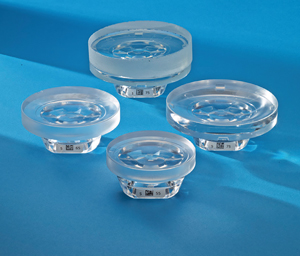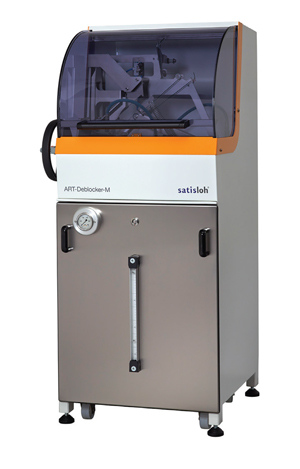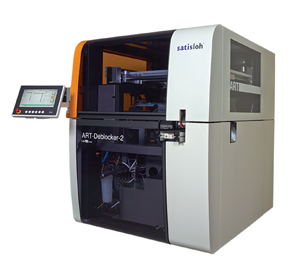Making the Shift to the ART System
| 
|
| ART block pieces.
|
|
|
Best Price Digital Lenses Inc., a full-service digital wholesale and AR coating lab located in Pensacola, Fla., recently made the shift to the ART system. General manager Rolando Domingo said the company was looking to become more automated and reduce breakage in the lab.
He said the ART systems’ move away from traditional metal alloy piqued the interest of his team. “Alloy particles are one of the most common causes of scratching lenses and the ART system eliminated that for us,” he said, adding that the system helped fill several production gaps on his line. “The largest gap filled for our lab was no longer being limited in surfacing due to staffing issues. It can be quite challenging to train new staff about surfacing and keep the department staffed for multiple shifts. That all went away with the ART system.”

|
| ART-Deblocker-M.
|
|
|
|
Domingo said the system did offer the lab the opportunity to reduce production costs, particularly in the area of salaries. He noted that instead, the company repurposed the majority of their surfacing staff, a move that kept people employed and preserved valuable knowledge on the production line.
Overall, Domingo said that the improvement to the finished product was noticeable, but one area of finishing stood out above the others.
| 
|
| ART-Deblocker-2.
|
|
|
“There was a very big difference in knife edges. With the ART systems, our knife edges significantly came down, which was very beneficial for our polishers,” he said.
The change also resulted in improvements to efficiency and production time, as a result of the automation component of ART. Domingo added that scratches were cut in half within the first two months of installation.
As new and existing labs grapple with the range of production choices available on the market, Domingo said the ART system has applications that are best suited to larger labs.
“I would highly recommend any lab processing more than 600 to 700 jobs per day to switch to ART, but in my opinion, if a lab is processing less, it wouldn’t be as beneficial,” he said. “I would definitely recommend for a lab to do their homework and if possible, visit a lab currently using the ART systems before switching.”
|